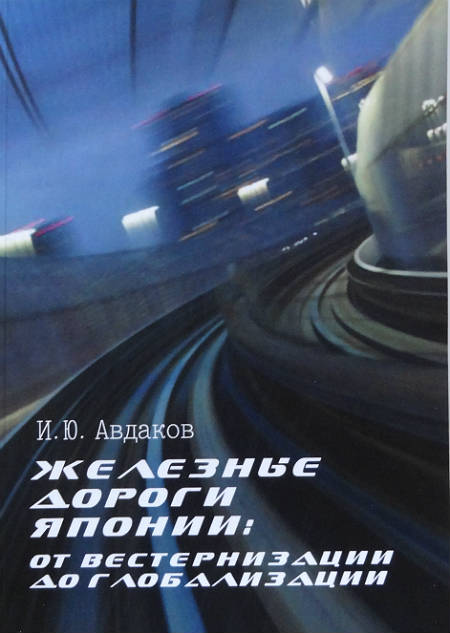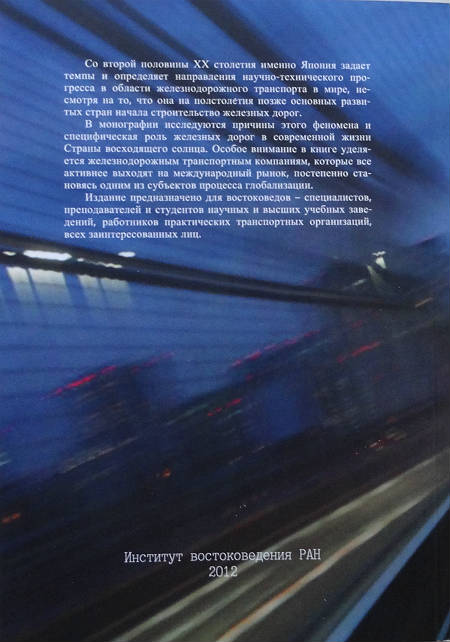Book
Japanese Railways from Westernization to Globalization
Еditor: Akimov Alexander
Institute of Oriental Studies of the Russian Academy of Sciences
Москва, 2012, 172 p.
Japan started railway construction in the 2nd part of 20th century, half a cen-tury after Great Britain, Germany, the USA, and some other countries of Europe and America. However the country caught up with them quickly and became the leader in railway business. It undoubtedly proved to be the best by opening the world first high-speed railway (shinkansen). The author of the monograph analyses the causes of this phenomenon and specific role of railways in modern life of the land of the rising sun. Special attention is paid to railway companies, which now ever more actively are entering the interna-tional market, and gradually become one of main figures in globalization process. The Japan’s railway history numbers four main periods of railway development: the first is from the beginning to the nationalization of railways (1872 – 1906); the second is from the nationalization to the foundation of Ja-pan National Railways – Kokutetsu (1906 – 1949); the third is from the dawn of Kokutetsu to its decline (1949 – 1987); the fourth is from the splitting up the state owned railway network and privatization to nowadays (1987 – …). Each period has its own drastic characterizing features but dialectically comes from the previous. In the 21st century Japan’s railways face many new grave challenges: decreasing and aging population, stagnant economy, worsening environment. However railway passenger transport has good chances in populated areas. The scheme of main railways in Japan is given in Annex.
The book is meant for scientists-orientlogists, lecturers and stu-dents, workers of transport organizations, as well as for all interested per-sons.













